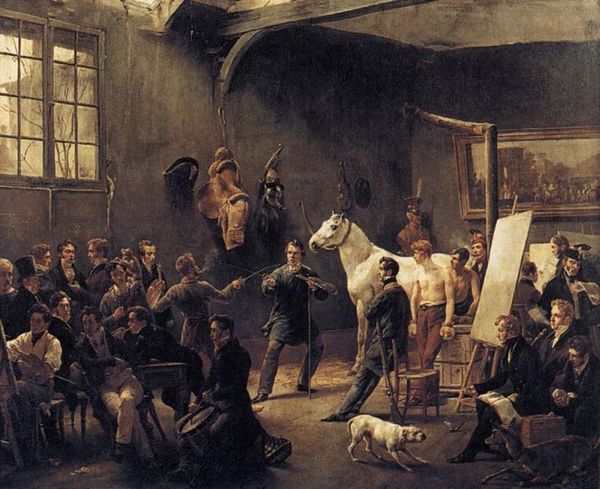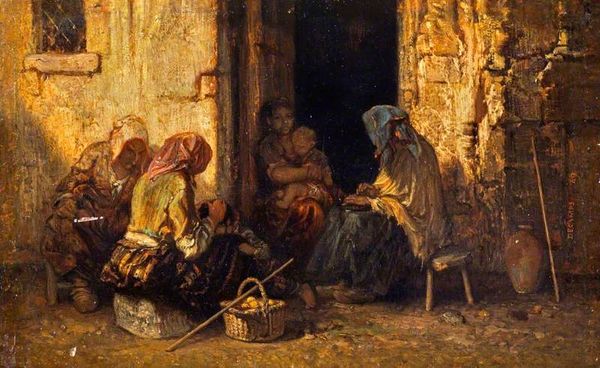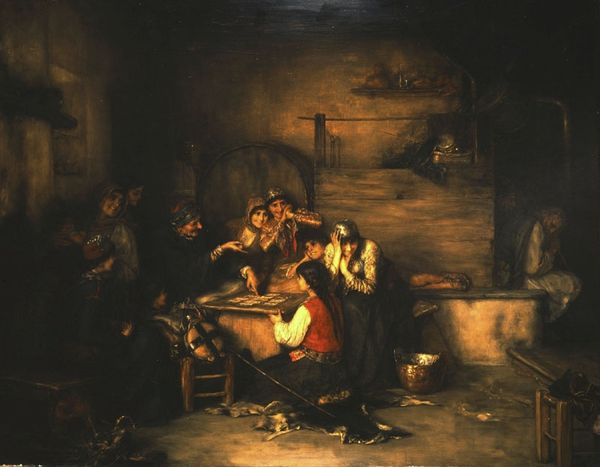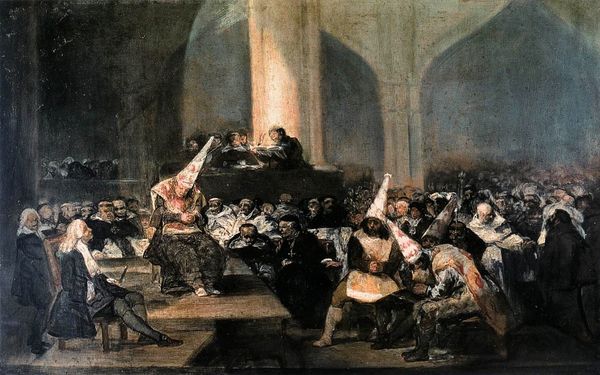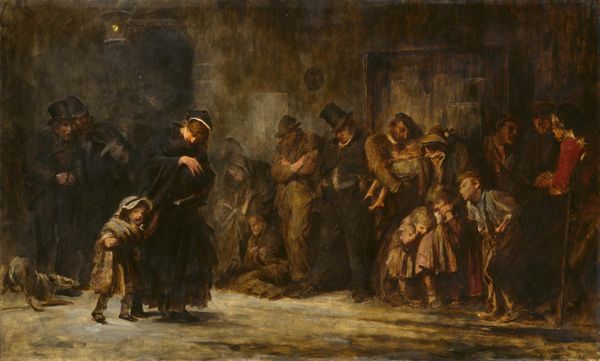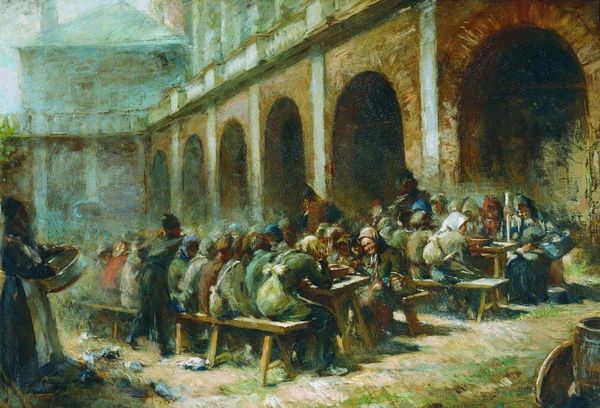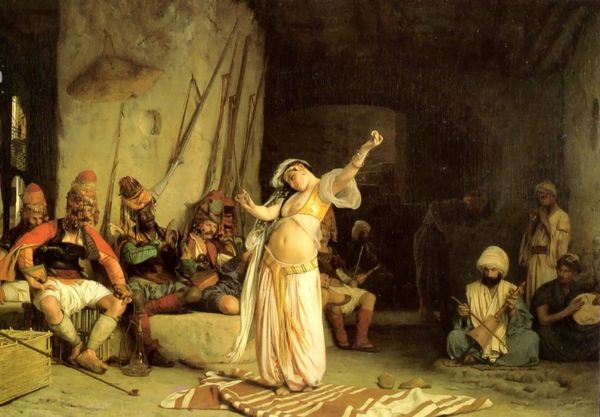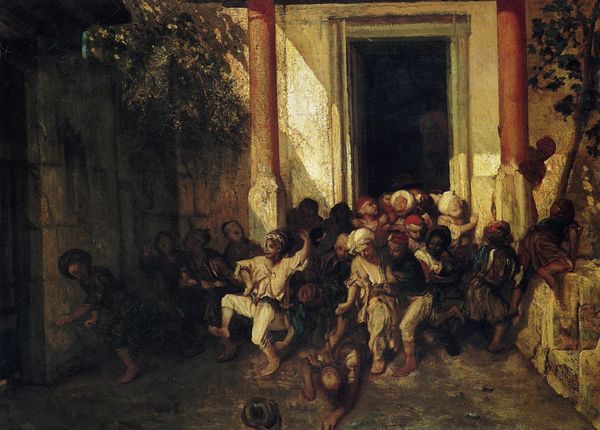
painting, charcoal
#
portrait
#
painting
#
charcoal drawing
#
figuration
#
romanticism
#
genre-painting
#
charcoal
#
history-painting
#
charcoal
#
watercolor
Dimensions: 45 x 72 cm
Copyright: Public domain
Curator: Francisco Goya painted "The Madhouse" in 1814. It's currently housed at the Real Academia de Bellas Artes de San Fernando in Madrid. What strikes you immediately about it? Editor: Sheer claustrophobia. It's the way the light almost smothers, pooling unevenly in the arched space—and those caged figures are not helping my anxiety! You just want to scream, right? Curator: That overwhelming sense is carefully constructed. Goya was deeply critical of societal responses to mental illness, particularly the warehousing of people with psychological disorders in asylums that often resembled prisons. Editor: And this feels like a prison, no question. Are those bars in the window the only exit? Or am I also crazy? Curator: That's part of the intent. By presenting such a scene, Goya challenges the viewer. He pushes us to question what "madness" truly is, and who is qualified to define it. What I find fascinating is his commitment to realism, even amid high drama. Editor: Yes, this is very real. Notice how he makes these individuals more than their madness. Even trapped like that, you see arrogance, despair, humor…like a cross-section of humanity in its less presentable attire. I mean, what are they even wearing? A stray headdress and ripped clothes? There’s a guy in the middle throwing punches like it's the Roman Coliseum. Curator: And the costumes might well reference theatre, the grand stage on which roles, including those imposed on the marginalized, are played out. The politics of appearance here are unavoidable. The viewer is confronted with the performance of sanity itself. Goya does that often with costume—plays on role. Editor: Right! Which casts a strange light on us as the spectators! Now, the washed out palette—how does that gray and near white coloring support that narrative of imprisonment and alienation? Curator: The limited palette certainly adds to the bleakness. Goya was a master of tonal painting; he knew how to use light and shadow to create drama. But in this piece, that mastery feels almost weaponized. It emphasizes the lack of vibrancy, both physically and mentally. It suggests that life, hope, and possibility are draining away from these figures. Editor: I still feel pinned in that corner with them. And is it our own sanity that gets subtly challenged and put to the test? Goya has an incredible way of pointing at everyone looking back. Curator: Indeed, and hopefully the encounter encourages a broader examination of sanity as it’s policed, and whose interests that serves. Editor: Food for thought for us all, even outside a madhouse.
Comments
No comments
Be the first to comment and join the conversation on the ultimate creative platform.

